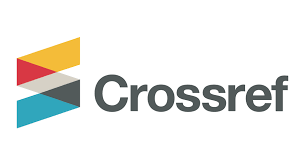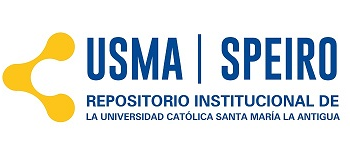Gender equality and COVID-19 pandemic: A focus in Spain and Catalonia
DOI:
https://doi.org/10.37387/ipc.v12i3.394Keywords:
informal employment, labor market, typologies, cluster analysis, dual economyAbstract
The Panamanian labor market experienced a steady increase in its rate of informal employment between 2018 and 2022. By 2023, 47.4% of employed individuals were working under informal conditions. If we understand this phenomenon as a reflection of market rigidities that lead to precariousness, it is essential to understand its characteristics in depth to formulate and implement effective public policies that improve the outcomes and potential of the labor market. In this study, we expand the definition and operationalization of the concept of informality to include all individuals who are not direct contributors to the Social Security Fund. This helps us explore, across all economic sectors, the individuals living in informality, the most relevant variables that distinguishes them, whether different types of informality exist, and the major differences between these groups. Using the 2019 and 2022 Multiple Purpose Survey by INEC, we develop typologies of people living in informality through cluster analysis. The analysis suggests that different types of informality exist, that there were no major changes in the composition of these groups as a result of the 2020-2021 pandemic, and that the roles people play in their households remain a determining variable for understanding these dynamics. In the final section, we provide some policy implications.
Downloads
References
Bonilla-Silva, E. (2020). Color-blind Racism in Pandemic Times. Sociology of Race and Ethnicity (advance access, pp. 1-12).
Boe.es. (2015). Ley 17/2015, de 21 de julio, de igualdad efectiva de mujeres y hombres. [online] Available at: https://www.boe.es/diario_boe/txt.php?id=BOE-A-2015-9676
Carrasquer, P. (2013). El redescubrimiento del trabajo de cuidados: algunas reflexiones desde la sociología. Cuadernos de Relaciones Laborales, 31(1). DOI: 10.5209/rev_CRLA.2013.v31.n1.41633
Closingap. (2021). El cierre de las brechas de género sumaría cerca de 231.000 millones de euros al PIB español cada año, un 18,5%. [online] Available at: https://closingap.com/sala-de- prensa/notas-de-prensa/el-cierre-de-las-brechas-de-genero-sumaria-cerca-de-231-000-millones- de-euros-al-pib-espanol-cada-ano-un-185/
Diario Independiente Digital. (2022). El 83% de las españolas siente miedo al volver a casa de noche, según un estudio de una 'app' de seguridad para mujeres. [online] Available at: https://diarioindependientedigital.com/2019/11/el-83-de-las-espan-olas-siente-miedo-al-volver- a-casa-de-noche-segn-n-un-estudio-de-una-app-de-seguridad-para-mujeres/
European Commission. (2022). El pilar europeo de derechos sociales en 20 principios. [online] Available at: https://ec.europa.eu/info/strategy/priorities-2019-2024/economy-works- people/jobs-growth-and-investment/european-pillar-social-rights/european-pillar-social-rights- 20-principles_es
Idescat.cat. (2018). Indicadores de los objetivos de desarrollo sostenible de la UE para Cataluña. [online] Available at: https://www.idescat.cat/indicadors/?id=ods&n=13459&lang=es
INE. (2022). Instituto Nacional de Estadística. [online] Available at: https://www.ine.es
Inmujeres.gob.es. (2022). Instituto de la Mujer y para la Igualdad de Oportunidades - Noticias y novedades. [online] Available at: https://www.inmujeres.gob.es/actualidad/noticias/2020/Mayo/InformeCOVID19.htm
Montero, L. (2021). Por qué las políticas de movilidad urbana deben tener en cuenta a las mujeres. [online] The Conversation. Available at: https://theconversation.com/por-que-las- politicas-de-movilidad-urbana-deben-tener-en-cuenta-a-las-mujeres-167826
Objetivos de Desarrollo Sostenible. (2022). Objetivo 5: Lograr la igualdad entre los géneros y empoderar a todas las mujeres y las niñas. [online] Available at: https://www.un.org/sustainabledevelopment/es/gender-equality/
Pajín, L., (2021). Ser mujer en tiempos de pandemia. [online] ISGlobal. Available at: https://www.isglobal.org/healthisglobal/-/custom-blog-portlet/ser-mujer-en-tiempos-de- pandemia/2656521/0
Walby, S. (2009). Globalization and Inequalities: Complexity and Contested Modernities. Research Gate. DOI: 10.4135/9781446269145
Walby, S, et al. (2012). Intersectionality: Multiple Inequalities in Social Theory. Sociology 46(2): 224-240.
Beach, D, and Pedersen, R. (2013). Process Tracing Methods. Foundation and Guidelines. Ann Arbor: The University of Michigan Press.
World Economic Forum. (2021). Global Gender Gap Report 2021. [online] Available at: https://www.weforum.org/reports/global-gender-gap-report-2021
Published
How to Cite
Issue
Section
License
Copyright (c) 2024 info:eu-repo/semantics/openAccess

This work is licensed under a Creative Commons Attribution-NonCommercial-ShareAlike 4.0 International License.
1. The Publications Service of the Universidad Católica Santa María La Antigua (the publisher) preserves the patrimonial rights (copyright) of the published works, and favors and allows their reuse.
2. The magazine (and its contents) use Creative Commons licenses, specifically the CC BY NC SA type, where: "the beneficiary of the license has the right to copy, distribute, display and represent the work and make derivative works provided you acknowledge and cite the work in the manner specified by the author or licensor." Abstract: https://creativecommons.org/licenses/by-nc-sa/4.0/ license: https://creativecommons.org/licenses/by-nc-sa/4.0/legalcode
3. They can be copied, used, disseminated, transmitted and exhibited publicly, provided that: i) the authorship and the original source of its publication (magazine, publisher and URL, DOI of the work) are cited; ii) are not used for commercial purposes.
4. Conditions of self-archiving. Authors are encouraged to electronically disseminate the post-print versions (version evaluated and accepted for publication), as it favors their circulation and dissemination, increases their citation and reach among the academic community.











